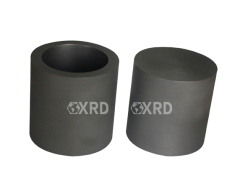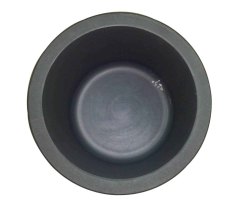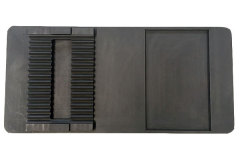|
XRD Graphite Manufacturing Co., Ltd.
|
Graphite Machining heat exchangers
| Price: | 500.0 RMB |
| Payment Terms: | T/T,L/C,D/A,D/P,WU,Paypal,Money Gram |
| Place of Origin: | Henan, China (Mainland) |
|
|
|
| Add to My Favorites | |
| HiSupplier Escrow |
Product Detail
Graphite heat exchangers are heat exchangers made of impregnated impervious graphite or press moulding impervious graphite.
Graphite heat exchangers are heat exchangers made of impregnated impervious graphite or press moulding impervious graphite.
Structure
Graphite heat exchangers can be divided into block type, shell type and plate type according to their structure.
Block hole type: It is assembled from a number of massive graphite components with holes.
Shell and tube type: shell and tube heat exchanger occupies an important position in the graphite heat exchanger, according to the structure is divided into fixed and floating head.
Plate type: Plate heat exchangers are made by bonding graphite plates. In addition, there are immersive, spray-type and sleeve-type (see snake-tube heat exchanger, casing heat exchanger).
The plate heat exchanger is a new type of high-efficiency heat exchanger formed by stacking a series of metal plates with a certain corrugated shape. A thin rectangular channel is formed between the various plates, and heat exchange is performed through the half plate. Plate heat exchanger is the ideal equipment for liquid-liquid, liquid-gas heat exchange. It features high heat exchange efficiency, small heat loss, compact and lightweight structure, small footprint, easy installation and cleaning, wide application and long service life. Under the same pressure loss condition, the heat transfer coefficient is 3-5 times higher than that of the tubular heat exchanger, covers an area of one-third of the tube heat exchanger, and the heat recovery rate can be as high as more than 90%.
Feature
The graphite heat exchanger has good corrosion resistance, the heat transfer surface is hard to scale, and the heat transfer performance is good. However, graphite is fragile, low in bending strength and tensile strength, and therefore can only be used for low pressure. Even though the block-shaped structure with the best pressure bearing capacity, the working pressure is generally only 0.3-0.5 MPa. Graphite heat exchangers are expensive, bulky.
Graphite pipes are classified into synthetic resin impregnation, water glass impregnation, and asphalt impregnation according to the impregnated materials.


























